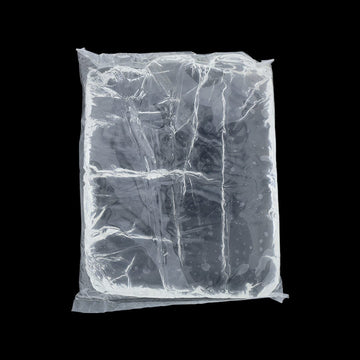Gel Wax

Gel Wax
Gel wax, often referred to as "jelly wax" or "crystal wax," is a unique and popular choice for candle making due to its distinctive transparent, jelly-like consistency. Unlike traditional candle waxes (like paraffin or soy wax), gel wax is not a true wax but rather a blend of mineral oil and polymer resin.
Here's a breakdown of its key characteristics and uses:
Key Characteristics:
Transparency: Its most defining feature is its crystal-clear appearance, which remains transparent even after cooling. This clarity allows for the creation of visually stunning candles with embedded decorations.
Jelly-like Consistency: It has a unique, rubbery, and elastic texture similar to jelly.
Longer Burn Time: Gel wax candles generally burn significantly longer than traditional wax candles, often twice as long as paraffin wax. This is due to its higher melting point and slow melt rate.
Higher Melting Point: Gel wax requires a higher melting temperature (typically 110-125°C or 230-260°F) compared to other waxes. It should be melted over direct heat in a saucepan, rather than a double boiler, with extreme care to avoid overheating.
Container Use Only: Due to its lack of rigidity, gel wax must always be used in containers (e.g., glass jars, tumblers). It cannot be used for pillar or freestanding candles.
Fragrance and Color Compatibility: it hold fragrance and color.
Fragrance Oils: Only non-polar fragrance oils with a high flash point (170°F or higher) are recommended. Polar fragrances can cause clouding, separation, or even create dangerous "pockets" of oil that can flare up.
Colorants: Liquid candle dyes are generally preferred to maintain clarity. Too much dye, or using paraffin-based dye chips, can make the gel cloudy.
Fragrance Load: It generally supports a lower fragrance load (typically 3-6%) compared to other waxes.
Bubbles: Gel wax has a tendency to form air bubbles, which can be seen as a desirable artistic effect for creating "underwater" or "bubbly" scenes. However, to minimize unwanted bubbles, it's advised to heat the wax to a higher temperature and pour gently.
Embeds: Its transparency makes it ideal for embedding non-flammable decorative items such as seashells, glitter, small glass ornaments, dried fruit slices (non-flammable types), or even other wax-safe embeds.
Uses in Candle Making:
Gel wax is primarily used to create:
Decorative Container Candles: Its clear nature is perfect for showcasing embedded items and creating intricate scenes like aquariums, cocktails, or themed designs.
Novelty Candles: Often used for candles that resemble drinks, ocean scenes, or snow globes.
Wax Melts: While less common than for container candles, gel wax can also be used for gel wax melts.
Considerations and Safety:
High Melting Point: Always use a thermometer and exercise extreme caution when melting gel wax directly over heat, as it can ignite if overheated.
Wicking: Due to its slow burn, a larger wick (often zinc or paper-cored) than what you might typically use for other waxes is generally recommended to ensure a good melt pool. Wicks should be primed with gel wax for best results.
Container Safety: Use only thick-walled, heat-resistant glass containers designed for candles to withstand the higher melt pool temperatures of gel wax.
Embed Safety: Ensure all embedded items are non-flammable and placed away from the wick's path to prevent fire hazards.In summary, gel wax offers a unique aesthetic and extended burn time, making it a favorite for crafting highly decorative and visually appealing container candles. However, it requires specific handling techniques and adherence to safety guidelines due to its distinct composition and properties.
Shipping cost is based on weight. Just add products to your cart and use the Shipping Calculator to see the shipping price.
In the event of an incorrect product delivery, returns are accepted, and it is mandatory to provide a video as evidence to substantiate your claim regarding the received parcel.

